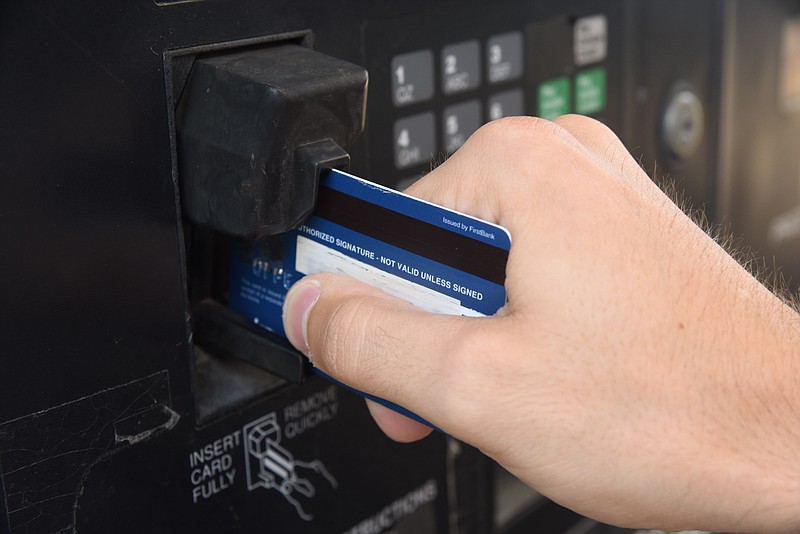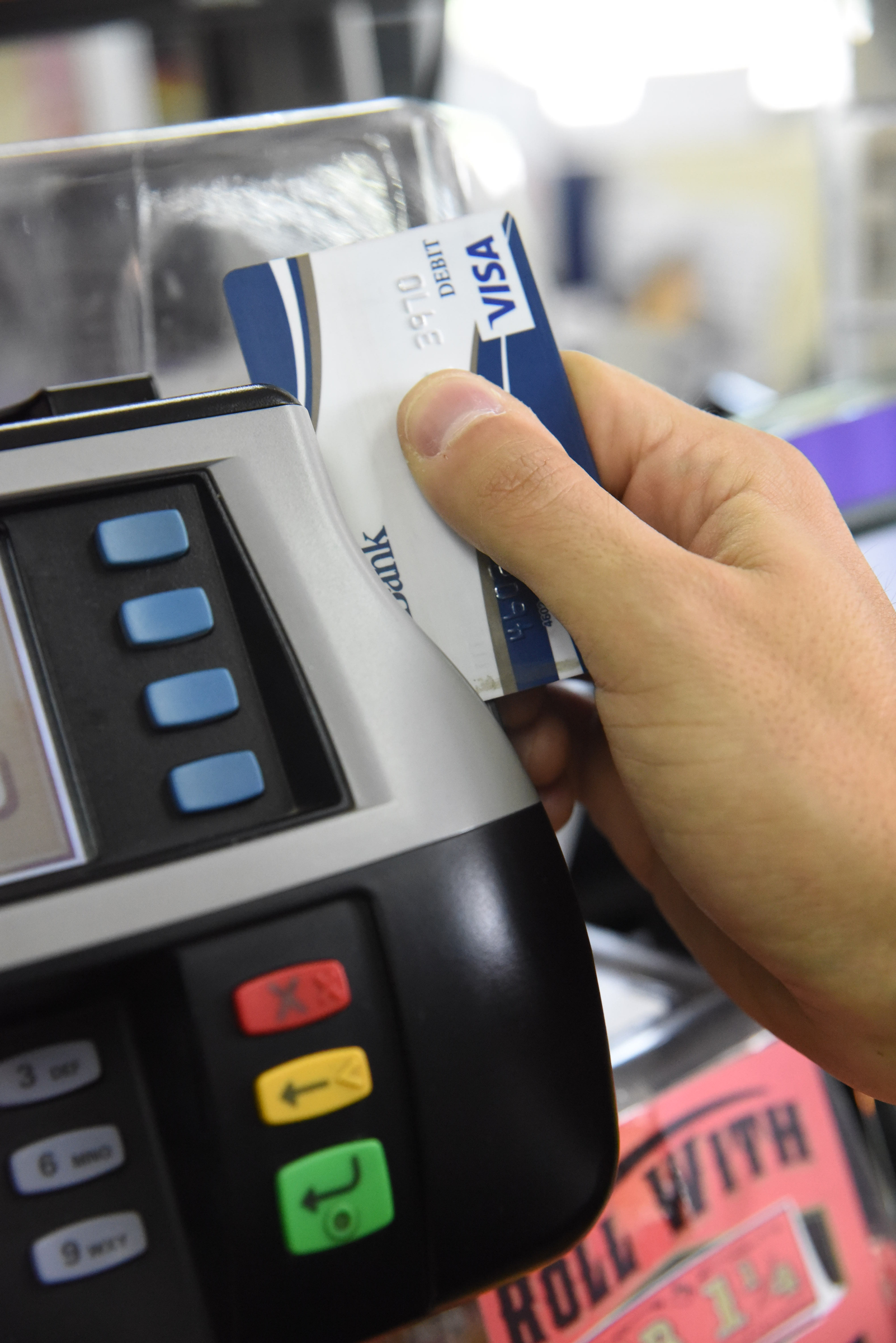One morning before work, you're walking the dog and the phone rings.
It's a representative from Staple's, saying your online order - supposed to ship soon - is halted. There's a problem with your credit card.
This is how Chattanoogan Kelton Bodell recently found out someone, somewhere, had stolen his credit card information and made fraudulent purchases through his account - that he had become one of millions to have private financial account information stolen in the U.S.
Credit card fraud strikes about a quarter of American credit card holders every year, according to CreditCards.com. Card fraud has been a serious and mounting problem here for years, costing retailers upwards of $32 billion in 2014 alone, according to MasterCard.
And for card holders like Bodell, it often strikes out of the blue.
"I checked my Discover app and had racked up around $900 in charges to Target and Staples from their online sites," said Bodell.
In his case, the crook (or crooks) bought a laptop.
"And a couple of reams of paper for some reason," Bodell said.
Sophisticated credit card theft and fraud technology can show up anywhere, often well-disguised and lying in wait for unsuspecting victims.
Last month at a Kangaroo Express gas station in Hixson, store employees and police discovered credit card skimmers on eight out of 10 gas pumps.
Credit card skimmers are card sliders that fraudsters attach to legitimate point-of-sale machines, like gas pumps and ATMs. Skimmers are most often found on unmanned machines. Skimmers steal card information from the electronic strip on the back of a credit or debit card. That information can then be imprinted on a new, blank card or sold on the internet.
Point-of-sale credit card theft has remained high in the U.S., where 47 percent of all credit card fraud occurs, though the country only represents 24 percent of worldwide credit card volume, according to CreditCards.com.
A full one quarter of American cardholders have been victims of card fraud.
And it's because here, old credit card technology is still widely in use.
Craig Shearman, vice president of government affairs and public relations at the National Retail Federation, said the U.S. has been slow in adopting the latest and greatest credit card tech and moving on from the magnetic strip.
"That magnetic strip is about as sophisticated as an eight-track tape from the 1980s," he said.
Magnetic strips are relatively easy to copy. And blank magnetic strip cards, at the same time, are easy and legal to come by. The strip technology on your credit and bank card is the same technology hotels use today in throwaway guest room keys.
But there is a better credit card technology out there, said Shearman, and it has reached American shores.
The EMV (short for Europay MasterCard Visa) card, equipped with a more secure data chip, is currently being ushered into wide use by American card users. Chip cards create a unique code at every purchase, making it much more difficult to create a fraudulent copy.
Chip cards also emit a signal at each purchase, signaling legitimate use.
"It's not something that's as easy to create as a magnetic strip," said Shearman.
Retailers across the country were given an October 2015 deadline to begin implementing chip card technology in stores. So far, around 1.6 million stores locations - or one-third of all store locations - are chip card-enabled, according to MasterCard.
Around 78 percent of MasterCard-brand credit cards in use in the U.S. today are chip cards. MasterCard officials say since chip card mandates rolled out last October, they have seen an approximate 40 percent decline in card fraud at chip-enabled stores.
And for the major credit card issuers (MasterCard, Visa and Bank of America, among others) chip cards also provide an important secondary measure: responsibility for fraudulent charges are less likely to fall on them, and more likely to fall on retailers' shoulders.
In the pre-chip card days, responsibility for fraud costs was divided between the banks and retailers.
Generally, if a card was found to be fraudulent, the banks would eat the charges, said Shearman. If a user was found to be fraudulent, the retailer normally ate the costs.
Credit card users are liable, under federal law, for a maximum $50 worth of fraud charges, but many banks today waive that fee. The Federal Trade Commission warns against purchasing expensive or extra credit card fraud protection.
With chip cards in place, meanwhile, fraud charges today are most likely to fall on the shoulders of retailers, as responsibility typically falls on the entity with the least secure technology.
A recent ConsumerWorld survey found approximately 47 out of 48 stores currently have chip card readers in place. At a cost of around $2,000 to $3,000 per reader, the installation of new readers across the country cost retailers - who shouldered the bill themselves - about $35 billion.
But only about 50 percent of chip readers in the U.S. are currently up and running, the National Retail Federation estimates.
And according to Shearman, the finger points back at the banks. He said many retailers are still waiting for bank approval to turn their chip readers on.
The National Retail Federation expects by 2017, 90 percent of chip readers will be operational.
Still, having chip cards in the hands of every American credit card user and chip readers at every retailer will not end credit card fraud in the U.S.
Europe, Asia and Canada have all adopted chip card technology, with the added security of requiring a secret PIN number for credit card purchases.
The U.S. still only requires a signature for credit card purchases with chip cards.
And chip cards do little or nothing to curb online credit card fraud and theft, where an estimated 45 percent of the crime takes place, according to CreditCards.com.
Additionally, gas stations don't have to start adapting chip card technology until Oct. 2017, meaning paying at the pump will continue to require sliding a magnetic strip and checking for illegal card skimmers.
ATMs are required to start adapting chip card technology in October of this year.
Contact staff writer Alex Green at agreen@timesfreepress.com or 423-757-6480.

